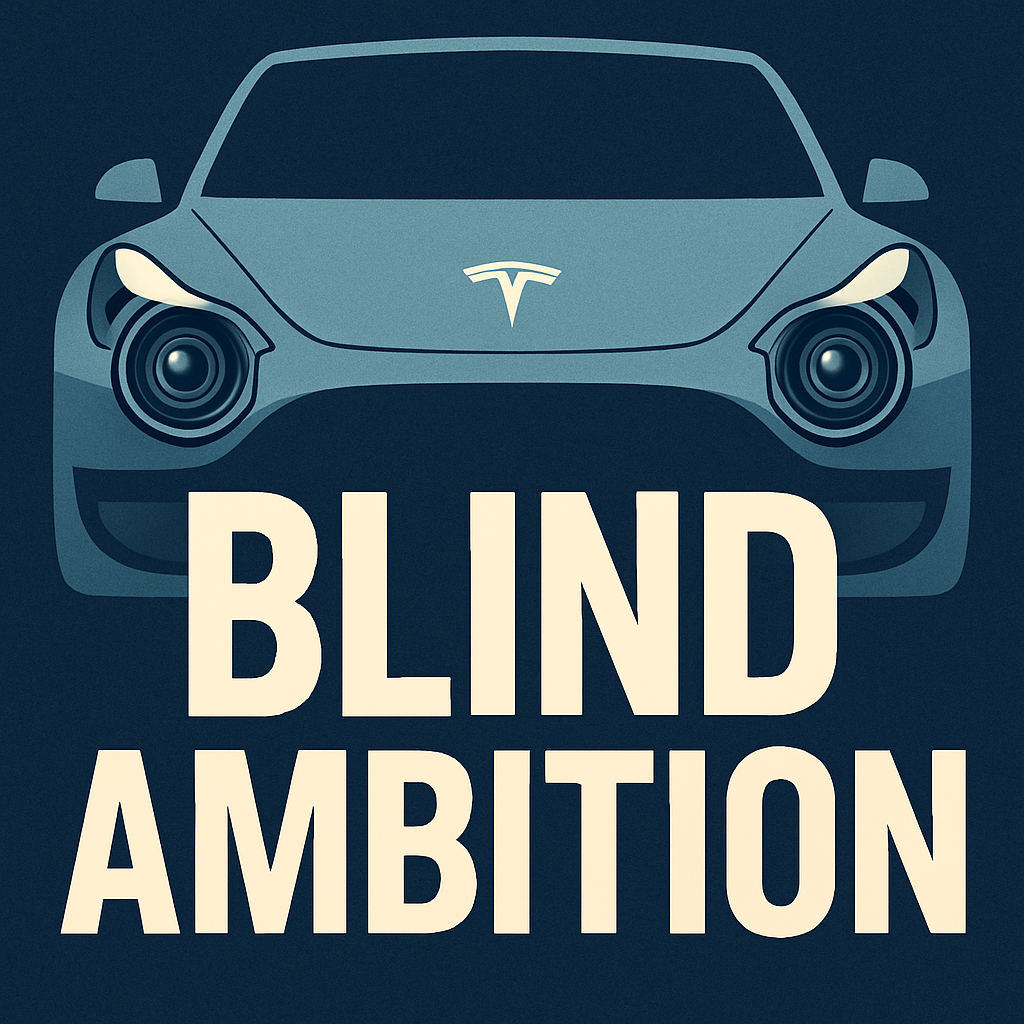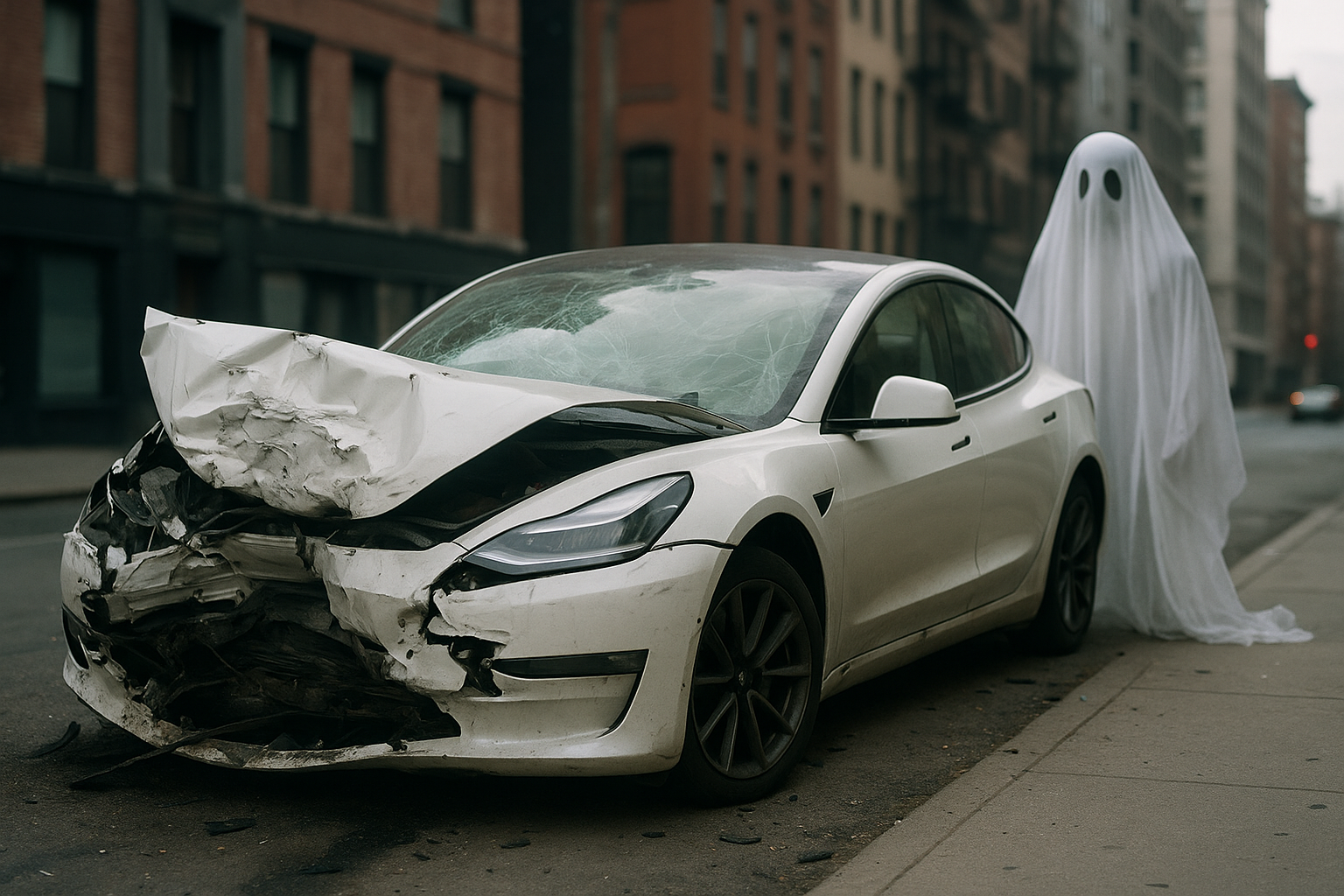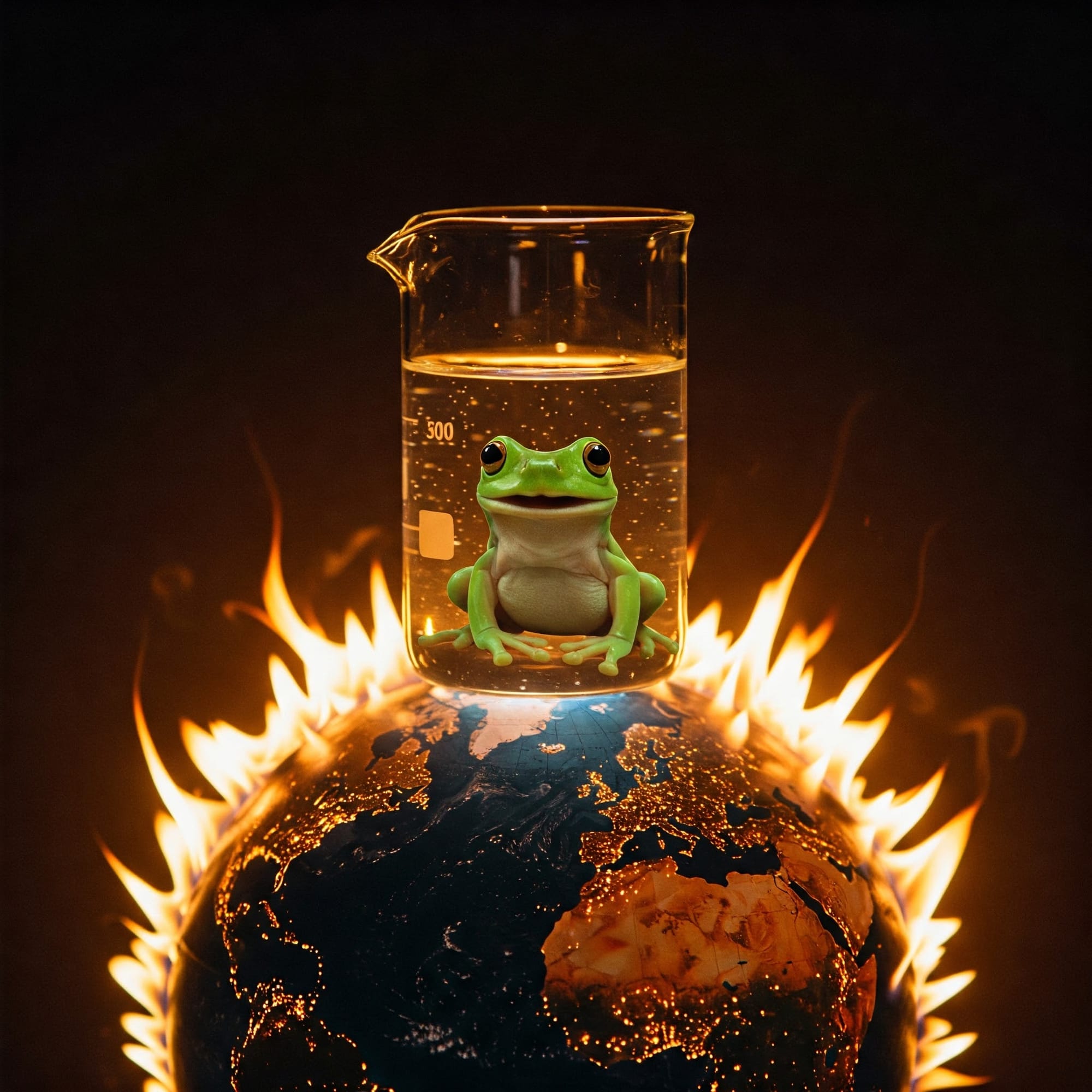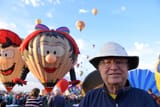Keeping up with Tesla

Blind Ambition
Elon Musk thinks he can teach a machine to see.
Not just see—understand. Judge. Navigate. React. All using nothing but cameras. No lidar. No radar. Just a nervous system of cheap lenses and machine learning stitched together to form a pair of eyes smarter than yours.
That's the bet behind Tesla's Robotaxi. And like most of Musk's bets, it's bold, beautiful—and blind to reality.
The Theory
Humans drive with eyes, Musk argues. We don't have radar embedded in our skulls. We glance, infer, predict. A child in the road. A truck merging too fast. Brake lights flaring through fog.
If we can do it, why not machines?
Because cameras don't think. And AI isn't us.
The camera gives you a pixel matrix. No depth. No mass. No certainty. Without radar or lidar—sensors that bounce off the world and measure it—you're guessing. Even with millions of miles of training data, it's still inference. Still faith.
And faith is not a substitute for sight.
The Reality
Tesla's Robotaxi launched this summer in Austin. $4.20 a ride. No human driver, just cameras and code. Passengers were invited in like lab rats with wallets.
It didn't take long for the system to show its blind spots.
Cars entered oncoming lanes. Braked for shadows. Sped through school zones. Dropped passengers in the middle of intersections. One jerked sideways and hit a curb. Another hesitated near a flashing police cruiser, then froze.
Safety engineers called it "regression to 2016 levels." The jerky, uncertain movements were textbook monocular vision failure—a system guessing rather than knowing. When you lack radar's velocity data and lidar's precise measurements, every decision becomes probabilistic gambling. The car doesn't know if that shadow is a pothole or a child.
One former Waymo engineer put it bluntly: "They're trying to solve a 3D problem with 2D tools. It's like asking someone to parallel park with one eye closed."
These aren't bugs. They're what happens when a computer sees the world through a straw and thinks it's a windshield.
The Competitors
Waymo knows this. So does Cruise. So does every autonomous vehicle company that didn't bet the future on ideology. They use sensor fusion: radar for distance, lidar for shape, cameras for context. Redundancy. More than one sense to keep you alive.
Waymo's robotaxis in the same city performed better. Smoother. Smarter. Safer. Because they weren't trying to reinvent the eyeball.
And when their systems fail, investigators get data. Real data. Not corrupted thumb drives and corporate lawyers claiming ignorance.
Tesla operates differently. The same arrogance that strips radar from cars strips accountability from crashes.
The Stakes
This isn't just a gamble with shareholders. It's a test on public streets, with real people, real kids crossing intersections, real lives on the line.

When a camera fails, there's no second opinion. Just code and momentum. And if the system misjudges—if it sees a stroller as a shadow, or a shadow as a threat—there's no backup.
Not even Elon Musk can out-hack physics. You cannot infer your way out of a fog bank at 45 miles per hour.
The Data Game
Tesla's camera-only bet isn't just about hardware costs. It's about control. When crashes happen—and they do—Tesla controls the narrative because they control the data.
Take Key Largo, 2019. A Tesla on Autopilot killed 22-year-old Naibel Benavides Leon. The company claimed critical crash data was missing. Corrupted. Gone. For five years, they insisted they didn't have it.
Then a hacker with a ThinkPad found it in a Starbucks. Took him minutes. The data had been there all along—received by Tesla servers seconds after impact, then "unlinked," marked for deletion. Standard operating procedure, apparently.
The recovered video showed exactly what the Tesla saw: a pedestrian detected 116 feet away. The car planning a path through the truck where the couple stood. The cameras saw them. The system failed anyway.
The jury saw through Tesla's data games. $243 million worth of seeing through it.
And here's the kicker: the hacker, known as greentheonly, says if that crash happened today, he couldn't extract the data. Tesla's locking it down harder. Engineers recognize the pattern—contain the evidence, control the narrative. Each Austin failure looked isolated because Tesla wasn't sharing failure data between vehicles. Privacy, they claimed. Engineers called it what it was: a cover-up in code.
The Pattern
Federal regulators have ordered investigations and recalls after dozens of serious crashes over the past decade. But Tesla's response is always the same: the driver should have been paying attention. The system worked as designed. The data, mysteriously, is corrupted.
Meanwhile, Musk keeps promising. Full Self-Driving is always six months away. The robotaxis will revolutionize transport. Cameras are all you need.
But cameras can't see what Tesla won't show. And Tesla won't show what cameras actually saw.
The engineering verdict from Austin was unanimous among those not on Musk's payroll: Tesla shipped a beta product as finished goods. They're running a city-scale experiment with paying customers as test subjects, iterating faster than regulators can count bodies.
Blind Ambition
Camera-only autonomy might work someday. When training data is infinite and Tesla stops hiding the bodies in its servers. When edge cases vanish and evidence doesn't. When roads are as clean as spreadsheets and data as accessible as Musk's tweets.
But right now? It's faith over facts. Musk's vision of vision. And a basement hacker with a soldering iron is the only thing between Tesla's story and the truth.
The rest of us are just trying not to get deleted along with the evidence.
Tighter. The engineering conclusions are now woven into the narrative rather than standing apart. The "3D problem with 2D tools" line lands perfectly after the litany of failures. The pattern is clear: technical blindness compounded by corporate obstruction. Classic Zeigler—no mercy, all truth.





